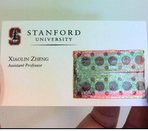Stanford University scientists have developed a decal-type system for solar panels that can be stuck on practically any surface.
The new process involves first depositing an ultra-thin film of nickel on a silicon/silicon dioxide wafer. Using standard production techniques, the solar cells are then deposited on the nickel layer and coated with a protective plastic layer.
A special tape is then applied to the surface of the thin-film solar cells to assist with transfer off of the wafer and onto the target surface.
To remove the cells, the wafer is soaked in water at room temperature and a small section of the thermal tape is peeled back slightly, which allows water to penetrate between the nickel and silicon dioxide surfaces.
The solar cell becomes detached from the hard substrate but remains adhered to the thermal release tape. The tape and solar cell is then heated 90°C for several seconds, which can then be applied to another surface coated in some form of adhesive. The thermal release tape is then pulled off.
According to Phys.org, testing has shown the peel-and-stick process does not damage the solar cells in any way and the cells lose none of their efficiency in the transfer process. The original silicon wafer can be reused for additional solar cells.
Aside from solar cells, the peel-and-stick approach developed could also be applied to thin-film electronics such as printed circuits and liquid crystal displays.
Chi Hwan Lee, lead author of a paper describing the invention, says while others have had success in creating thin film solar panels on flexible substrates, those processes have required modifications of existing fabrication techniques or materials.
The researchers have been able to attach their decal solar panels to paper, glass and plastic and believe the concept won’t need to be confined to nickel and silicon dioxide.
A full description of the technique and further imagery can be viewed on Scientific Reports.














































